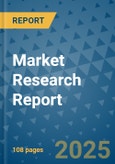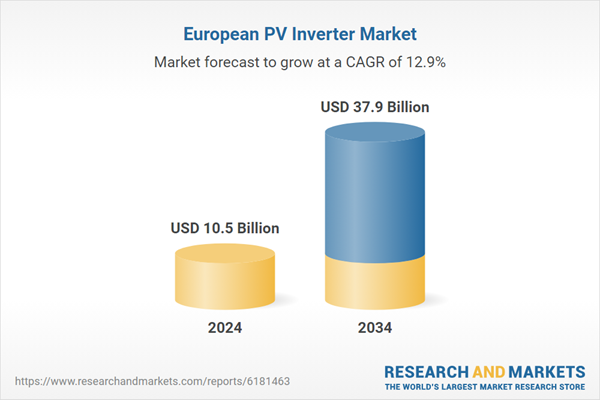The growth is fueled by evolving energy policies and regulations aimed at boosting renewable energy deployment. Supportive directives are driving the adoption of high-efficiency and grid-ready PV inverters that meet modern energy performance standards. The shift toward clean, decentralized power is pushing demand for smart, durable, and recyclable inverter technologies. With solar energy rapidly scaling across the region, PV inverters play a central role in converting DC to AC power for homes, businesses, and industrial uses. Advancements in smart grid infrastructure and grid-tied solar installations are encouraging manufacturers to innovate with intelligent inverter systems. Countries are prioritizing energy resilience, efficiency, and self-sufficiency, leading to widespread deployment of PV inverters. Germany leads the regional landscape with strong policy backing and high solar penetration. The ongoing shift toward energy independence, spurred by geopolitical disruptions, further boosts demand for decentralized energy systems and reliable inverter technologies across both residential and commercial segments.
The micro inverter segment is set to grow at a CAGR of 12.4% through 2034, supported by increased demand for residential rooftop solar and a stronger push for safer, more efficient panel-level energy control. These inverters optimize power output at each solar module, improving overall system performance, especially in installations with partial shading or uneven layouts. Their integrated safety functions and individual panel monitoring capabilities also meet rising expectations from homeowners and small businesses for smarter solar systems. Backed by targeted government incentives for distributed energy adoption, micro inverters are becoming a critical component in modern solar architectures.
The three-phase inverters segment accounted for 88.4% share in 2024 and is projected to grow at a CAGR of 13.2% through 2034. As solar installations become larger and more technically complex across Europe, the use of multi-phase inverter systems is expanding. These inverters are essential in delivering balanced and stable power, reducing phase imbalances, and enhancing grid reliability. The prevalence of three-phase electrical infrastructure in European commercial, industrial, and even residential sectors further boosts adoption, ensuring efficient energy flow and compatibility with grid standards.
Germany PV Inverter Market held a 32.9% share in 2024 and is forecast to reach USD 12 billion by 2034. As the country focuses heavily on energy security and reducing dependency on centralized power, there has been a surge in rooftop solar installations. This directly drives demand for advanced inverters capable of handling localized energy generation. Policy reforms continue to support this momentum, making permitting easier and improving compensation structures, all of which are enhancing market conditions for inverter suppliers. Regulatory prioritization of solar energy and investments in grid flexibility further reinforce Germany’s leadership in the Europe inverter market.
Leading players in the Europe PV Inverter Market include GoodWe, SMA Solar Technology, Canadian Solar, Enphase Energy, Ginlong Technologies, Siemens, Omron Corporation, SolarEdge Technologies, Darfon Electronics, Schneider Electric, Delta Electronics, TMEIC, Sineng Electric, Huawei Technologies, Panasonic Corporation, Altenergy Power System, Eaton, Growatt New Energy, Sungrow, and Fimer Group. To strengthen their competitive positioning, companies in the Europe PV Inverter Market are focusing on several key strategies. Many are expanding R&D investments to develop intelligent, AI-powered inverter systems with enhanced grid connectivity, remote diagnostics, and predictive maintenance. Firms are also aligning their product lines with evolving Ecodesign and recyclability standards to meet new compliance benchmarks. Strategic partnerships with utility providers, solar EPCs, and energy storage firms are helping create end-to-end energy solutions tailored to regional demands.
Comprehensive Market Analysis and Forecast
- Industry trends, key growth drivers, challenges, future opportunities, and regulatory landscape
- Competitive landscape with Porter’s Five Forces and PESTEL analysis
- Market size, segmentation, and regional forecasts
- In-depth company profiles, business strategies, financial insights, and SWOT analysis
This product will be delivered within 2-4 business days.
Table of Contents
Companies Mentioned
The companies profiled in this Europe PV Inverter market report include:- Altenergy Power System
- Canadian Solar
- Darfon Electronics
- Delta Electronics
- Eaton
- Enphase Energy
- Fimer Group
- Ginlong Technologies
- GoodWe
- Growatt New Energy
- Huawei Technologies
- Omron Corporation
- Panasonic Corporation
- Schneider Electric
- Siemens
- Sineng Electric
- SMA Solar Technology
- SolarEdge Technologies
- Sungrow
- TMEIC
Table Information
| Report Attribute | Details |
|---|---|
| No. of Pages | 108 |
| Published | October 2025 |
| Forecast Period | 2024 - 2034 |
| Estimated Market Value ( USD | $ 10.5 Billion |
| Forecasted Market Value ( USD | $ 37.9 Billion |
| Compound Annual Growth Rate | 12.9% |
| Regions Covered | Europe |
| No. of Companies Mentioned | 21 |









